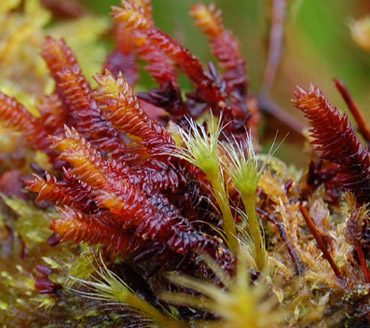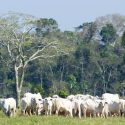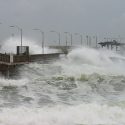Digitization project promises lichens and mosses at our fingertips
Lichens and mosses are well-known barometers of the environment.

Pleurozia is a North American liverwort that is among the 9,000 species of North American mosses and lichens that will get catalogued in a new online database managed by the Center for Limnology. Photo: courtesy Matt von Konrat.
With no real roots, they literally soak up their food from thin air — living on water and nutrients extracted mostly from the atmosphere. They come and go depending on factors of environmental quality such as air pollution, humidity and temperature. Both mosses, known to scientists as bryophytes (and which in fact include liverworts and hornworts, as well as mosses), and lichens, a botanical amalgam of algae and fungus, have been used as environmental sentinels to monitor changes in air quality. Increasingly, they are being used to identify the subtle manifestations of climate change.
But soon lichens and mosses could assume a new and much broader importance as harbingers of environmental change, thanks to an effort to digitize the lichen and moss collections of U.S. herbaria. With support from the National Science Foundation, a team led by University of Wisconsin–Madison researchers Corinna Gries and Thomas H. Nash III will soon begin assembling a massive online database of the estimated 9,000 species of North American mosses and lichens.
“The whole effort is based on how lichens and bryophytes can be used to document environmental change,” explains Gries, a staff scientist at the UW–Madison Center for Limnology, where the project is based. “They are particularly well-suited organisms because they are very sensitive and they are already living in very extreme environments.”
When complete, the database will include entries for as many as 2.3 million lichen and moss specimens from more than 60 collections from U.S. herbaria. Each entry will include data about when and where the specimens were collected. Ultimately, the database will be in a searchable, publicly accessible space where, according to Nash and Gries, government agencies as well as environmental scientists, ecologists, climatologists, botanists and others can access the data.
The effort to immortalize mosses and lichens online, say Nash and Gries, will depend heavily on the contributions of others, including volunteers, who will digitize the data, one specimen at a time.
The task is complicated, they say, because it cannot be fully automated. Character recognition programs, for example, may have difficulty reading the 19th-century handwriting on the tags that accompany specimens collected before the invention of the typewriter. What’s more, as taxonomists subject specimens to scrutiny, some for the first time, some of the lichens and mosses could be assigned new names or placed on different branches of the family tree.
“The names change because someone may look at a group closely for the first time or they may be subjected to a genetic analysis” that may be more definitive than classification by the human eye, says Nash, a lichenologist and emeritus professor of botany at Arizona State University.
Nash and Gries are particularly enthused by the geographic information that will be included with each entry. Typically, when a specimen is newly collected, the point of collection is noted. The new digitization project will catalog latitude and longitude coordinates. In a database, such information can be used to track the historic movement of the plants across the landscape. This promises to be particularly useful information as scientists document the effects of climate change. The Arctic, for example, is a veritable garden of lichens. But polar regions are also among the most affected by potential climate change, and the composition of lichen ecosystems may change dramatically.
“In many ways, lichens are tolerant of stress — heat and cold,” Nash explains. “However, the Arctic is changing dramatically, and things may be disappearing rapidly. We can do a very interesting historical reference once these collections are digitized and analyzed.”
The geospatial information can also be used to document changes in air quality in a region. Nash cites a European lichen species, thought to have evolved near Iceland’s volcanoes and geothermal vents, tolerant of sulfur dioxide. Its range has waxed and waned, first with the advent of the industrial age and later as air pollution controls were imposed on coal-burning power plants and industries.
Even the influence and spread of modern agriculture is reflected in mosses and lichens, Nash notes, as they are sensitive to nitrogen, widely used in chemical fertilizers. “Lichens and mosses that are tolerant of nitrogen have increased in recent years,” says the noted lichenologist.
Gries expects that the project will be completed in four years. “The technical challenge is enormous,” says the scientist. “We want the database to be easy to use from home, but the data also needs to be secure, and data quality is always an issue. From an ecological perspective, it is very important that the data mean something.”
Tags: biosciences, environment



